A SOUND IN THE MAKING - A new series by Bluesound dedicated to spreading sonic enthusiasm whilst sharing our obsession with audio engineering and high resolution sound reproduction. Designed to showcase inventive and creative sound makers through exclusive access to studio rehearsals, mixing sessions and on-site venue sound checks - we uncover unique insights into the processes, inspirations and vision that goes into making their unique sound - a parallel journey to our own quest for perfection in sound. Come along for the ride.

November 3rd, we’re at the Roundhouse theatre in London where the Mount Kimbie tour bus has just pulled up ahead of their biggest show to date. After stepping off briefly for some air and a smoke, with coffees in hand we join Dominic Maker and Kai Campos back inside the bus to deconstruct Four Years and One Day, the song that not only open’s their latest album Love What Survives, but will also kick-off tonight’s sold-out show.
Bluesound: You guys chose Four Years and One Day for A Sound In The Making, why this song?
Kai: I think it sums up the record pretty well, sonically it has a lot of the different parts that feature in the rest of the album. It’s like a signpost in the direction that we were trying to go on the record, and if you take how it was written, it bookmarks the album from when we started making it… to the very end.
Dom: Four Years to me is the beginning in many ways, in terms of the way we approach the record, the beginning of the live show, the beginning of the album. In a way it’s quite kind of aggressive, and then again, it also has a kind of simplicity. It has always had a kind of fire, inside it.
“It’s almost like a deconstructed song, where you can see inside the inner workings. It kind of motors out of the frustration of the cloudy first half – into something more direct.” - Kai
Bluesound: Can you tell us a little about the creative process; the making of it?
Kai: We took a break from touring and writing about four years ago and this is one of the first ideas that followed. We had this line that starts the whole track, that has been around for a long time. I liked it, but it just wasn’t right and it wasn’t what we were trying to do. It wasn’t direct enough, and didn’t feel like the finished thing.
The next three years I kept on coming back to it and try and find what the real song was in it. It’s really hard, normally people say that you shouldn’t be working on an idea for that long because you lose the initial spark and you’re trying to kind of rediscover what was there when you first had the idea. But this one, for some reason, I really wanted to figure it out – like a puzzle in some ways.
So basically what happened was that it was the last day before we were going to start mixing the album, and this track just wasn’t done. That night before mixing, I was like… I just feel like giving it one more go.
I sat down in my house actually - not even at the studio, and the rest of the track just kind of came. It was just there and seemed obvious. So I recorded it in my front room and in my bedroom and took it to mixing the next day.
“The first half had been such a torturous slog, and then the rest of it was finished in like two hours. When you’re pushed up against the wall, you find the answers, so the title ‘Four Years and One Day’ is kind of an inside joke.” - Kai
The sound of equipment being unloaded from the trucks reminds us all that just a few metres away the stage is being set for tonight’s show. We make our way off the bus and wander through the loading bay into an iconic venue that will in just a few short hours be packed to the rafters. After taking a moment to soak up our surroundings, we drag a few chairs into the middle of the theatre and continue our chat.
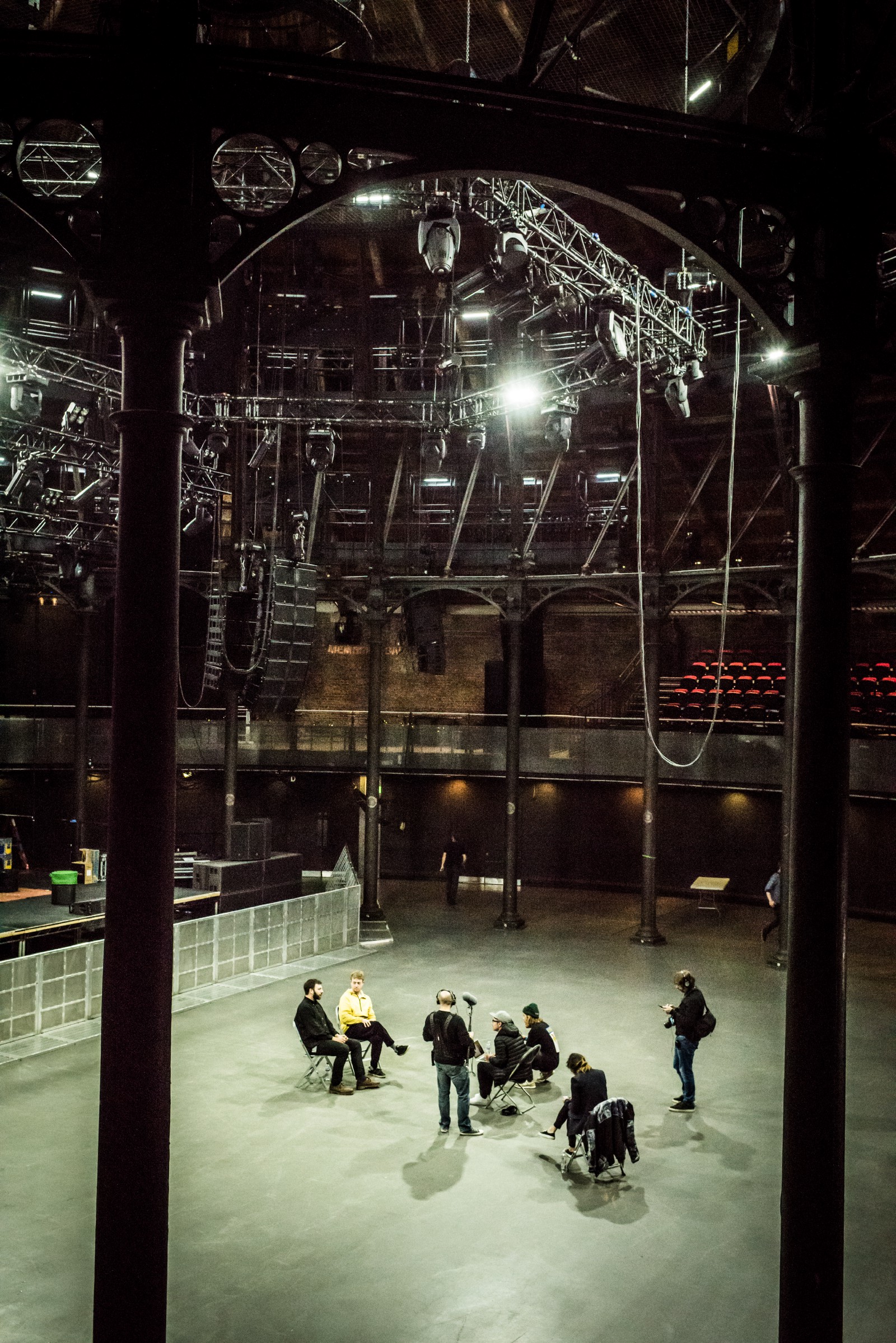
Bluesound: Were there any conscious influences within the track?
Kai: We worked with an engineer called Andy Ramsay. He was the drummer in Stereolab, who had quite a big influence on our music. I had this idea for the rhythm section, and Andy had given his take of adding another kick, so it was kind of constant and driving.
We recorded that through drum machines and preset rhythms, then wanted to put back more live playing, so Marc our drummer came in for a session to go through ideas. We worked with techno pots and pans, which is Marc’s speciality. So there was this driving rhythm throughout the whole thing that was one of the first things that felt like a progression in the track, and kind of a theme throughout the album.
Bluesound: Can you elaborate on the instrumentation and sound of the final version?
Kai: It was just complete improv. With a micromoog - a very gritty sounding thing from the 70s which is like a really basic one oscillator synth-I recorded one line of it and then just went back to the beginning and recorded another line underneath that was similar, but kind of weaves in and out of the first one.
“Weaving is a good way of putting it. It’s kind of all over the place and gets tethered down a bit by the beat coming in. Then the modular brings back that element of tension, of not knowing where this is going.” - Dominic
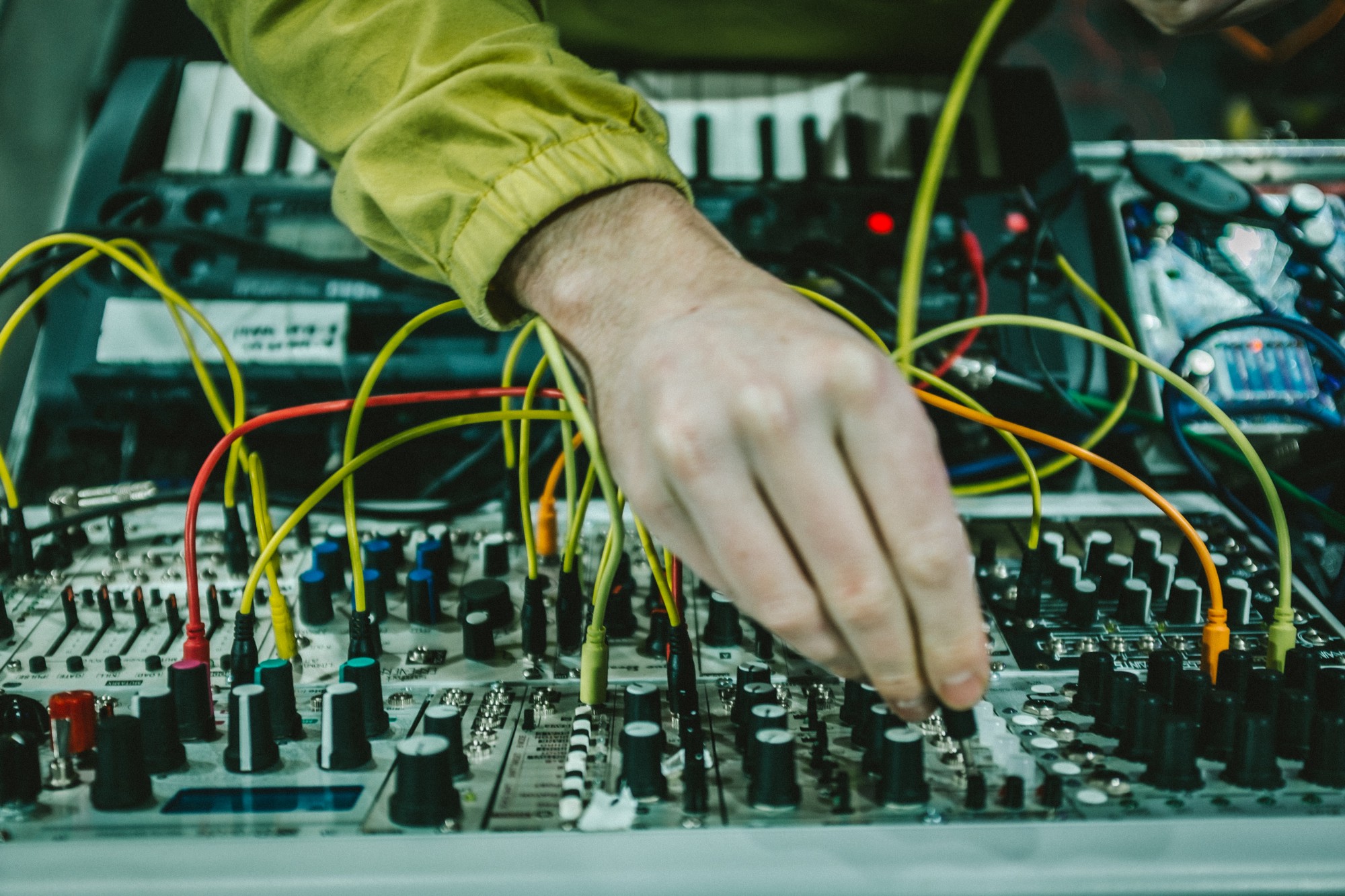
Kai: With the modular synth, we recorded three or four layers of this kind of screaming flute emulation thing, which bends and goes out of tune on top of the rigidness of the rhythm that we created. This thing just freed it up and lifted it.
Bluesound: How much of the final sound was captured live versus during mixing?
Kai: With this record we’re just trying to create an environment of spontaneity and have everything geared towards being able to record quickly and not worrying too much about how it was going to fit, or how it works within a normal studio workflow, or whether it was in a certain BPM. It was just creating as much raw material as possible, and that means having everything turned on to record all the time.
Dom: A good friend Dilip Harris mixed the record. The last two records he’s really helped shape, and this is such an important part because despite doing this for a decade, there’s a lot that he knows that we don’t know about.
Kai: We’d be foolish not to listen to the advice of somebody who’s been doing it 30 years, but it’s quite hard to relinquish control when you come from our background of like controlling everything inside our computers.
“I thought why would you go to a mix engineer when you already have your idea about how you want to sound? But it opened up so much, and the end result is so much better for going through that process.” - Kai
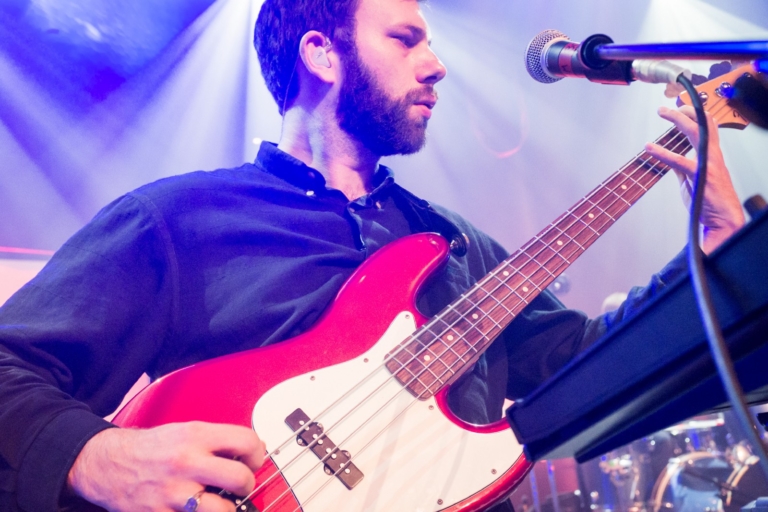
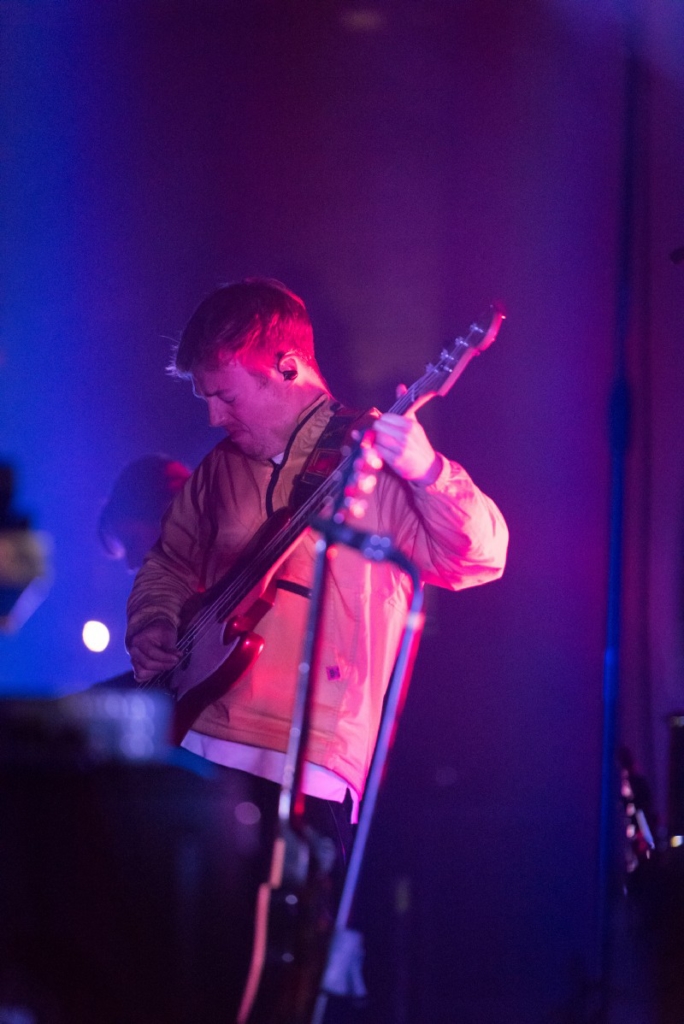
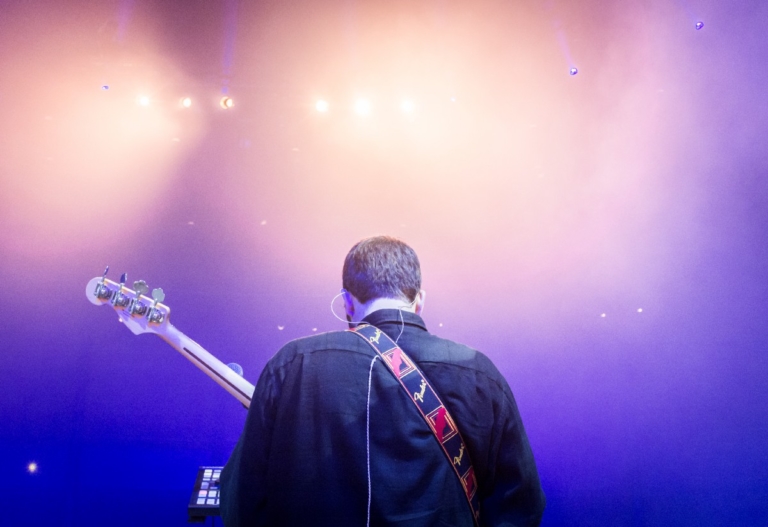

As we wrap up our chat with the band they invite us to come back in an hour for the sound check. Knowing that they’re going to be opening the show - and therefore completing their soundcheck - with Four Years and One Day, we don’t hesitate to take them up on the offer.
With the arena to ourselves, the lights dimmed and the light show synced, we’re treated to a full length performance that has us itching to get back for the show.
Bluesound: You’re performing it tonight, what can we expect?
Dom: We use it to open the show, which is the only place that feels right to play that song. It brings in some new elements for us that we never really used on stage before, like the modular, which is a kind of exciting.
Kai: It used to be a much more challenging thing – taking the record and thinking about how to perform it. The approach to our first two records was much more scatter gun and all over the place. This time we have somewhat deliberately focussed the palette of sound and the way that we were making it. So there’s this bizarre thing of going to rehearsal for the first time with new songs and we just we just use the same equipment we made it with, because there’s not so much of it. There’s a really straight line between this record and performing it.
“It’s my favourite song that we’re playing live at the moment because it has that sort of momentum and energy. It’s quite different to anything we’ve released in the past and feels like a perfect way to set people up for the rest of the show.” -Dominic
Around 9pm and we’re backstage with the band as they’re about to take the stage. We haven’t yet set eyes on the three thousand plus fans who’ve crammed into this former ‘turntable’ railway shed, but we can feel them and as Dominic, Kai, Marc and Andrea climb the steps to the stage for Four Years and One Day, every single voice in the crowd makes themselves heard.
Hear the studio version in true high res on Tidal, or in 320kbps on Spotify.